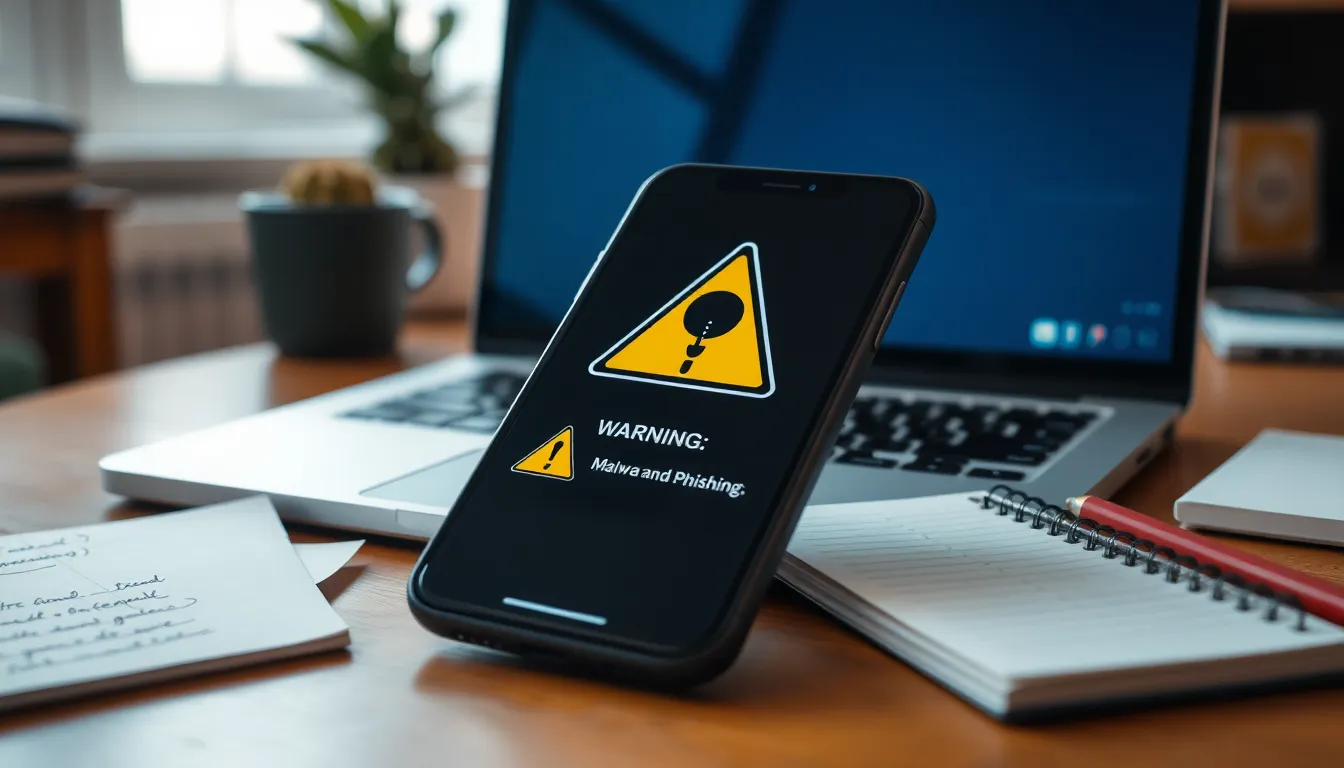Table of Contents
ToggleIn a world where smartphones are practically an extension of ourselves, mobile online security has never been more crucial. With every tap and swipe, users risk exposing their personal information to cyber villains lurking in the shadows. Who knew that scrolling through cat memes could come with such high stakes?
Overview Of Mobile Online Security
Mobile online security plays a crucial role in protecting personal information from cyber threats. Users encounter numerous risks while browsing social media platforms and downloading applications. The prevalence of malware, phishing attacks, and insecure networks increases vulnerability.
Mobile devices often store sensitive data, including passwords and financial information. Because of this, hackers frequently target these devices. Public Wi-Fi networks pose additional threats, as they may lack encryption.
Employing strong passwords and enabling two-factor authentication significantly enhances mobile security. Users benefit from regularly updating software to patch security vulnerabilities. Installing reputable security applications further safeguards against emerging threats.
Statistics reveal that 70% of mobile users express concerns regarding their online security. Awareness of potential risks contributes to proactive security measures. Businesses also play a vital role, as they must implement robust security protocols to protect user data.
Education on mobile security enables users to navigate digital environments safely. Engaging in safe online practices, like verifying app permissions and avoiding suspicious links, minimizes risks. Mobile online security requires collective action from users, businesses, and developers for effective protection. Through continuous vigilance and updates, users can maintain a secure mobile experience.
Common Threats To Mobile Security


Mobile devices face numerous threats that compromise security and expose users to risks. Understanding these threats enhances awareness about personal and business data protection.
Malware Attacks
Malware attacks represent a significant threat to mobile security. Frequently, malicious software infiltrates devices through suspicious apps or links, leading to unauthorized access. These attacks can result in the theft of sensitive information, including passwords and financial data. According to cybersecurity reports, around 60% of mobile malware is delivered via compromised applications. Therefore, downloading apps only from trusted sources reduces exposure to malware. Regular software updates also patch vulnerabilities, enhancing protection against these malicious intrusions.
Phishing Scams
Phishing scams target users through deceptive emails or messages designed to steal personal information. These scams may appear legitimate, often mimicking financial institutions or trusted brands to instill trust. The rise of mobile usage has led to an increase in mobile phishing attacks. Statistics reveal that about 30% of users fall victim to these scams. Recognizing signs of phishing, such as poor grammar or unsolicited requests for information, helps mitigate risks. Furthermore, enabling alerts for account activity can aid in recognizing unauthorized attempts promptly.
Best Practices For Enhancing Mobile Security
Enhancing mobile security is vital for protecting sensitive information from cyber threats. Implementing best practices can significantly bolster security measures.
Regular Software Updates
Regular software updates serve as a crucial line of defense against vulnerabilities. Developers frequently release patches that address security flaws discovered after the initial launch. Ignoring these updates can expose devices to risks like malware attacks, especially since 60% of mobile malware infiltrates through compromised applications. Enabling automatic updates allows users to maintain the latest protections without manual intervention. Furthermore, keeping apps updated ensures they operate efficiently and securely. Heeding notifications for software upgrades and conducting routine checks can enhance overall device safety.
Strong Passwords And Authentication
Strong passwords and robust authentication methods protect personal data from unauthorized access. Utilizing complex passwords consisting of at least 12 characters, numbers, and special symbols makes them harder to crack. Recommendations suggest using unique passwords across different accounts, which mitigates the risk in case of a data breach. Implementing two-factor authentication adds an extra layer of security by requiring a second verification step, further safeguarding sensitive information. Approximately 70% of mobile users share concerns about their online safety, highlighting the importance of adopting stringent password practices. Regularly changing passwords also contributes to enhanced security.
Recommended Security Tools And Applications
Mobile security applications play a crucial role in safeguarding devices from threats. Antivirus software like Norton Mobile Security offers comprehensive protection against malware and phishing attempts, making it a popular choice among users. Similarly, Malwarebytes provides real-time protection and is known for its effective malware removal capabilities.
Password managers such as LastPass securely store and encrypt user passwords, enhancing login security. Another option, 1Password, offers additional features like password sharing, which can benefit families or teams. These tools promote the practice of creating strong, unique passwords for different accounts.
VPN services, like ExpressVPN and NordVPN, encrypt internet traffic and protect user privacy while connected to public Wi-Fi networks. By hiding IP addresses, these applications ensure that sensitive activities remain secure from prying eyes. Choosing a reputable VPN can significantly reduce the risk of data exposure.
Two-factor authentication apps, such as Google Authenticator and Authy, add an extra layer of security to accounts by requiring a second form of verification. Using these apps can make unauthorized access significantly more challenging. Considering their ability to protect important accounts, enabling two-factor authentication is highly recommended.
Regular software updates for both applications and operating systems maintain the latest security patches. Automatic updates ensure devices are consistently fortified against emerging vulnerabilities. Staying informed about software changes can prevent potential exploits.
Overall, utilizing these tools enhances mobile security, significantly reducing the threat landscape. Making informed choices about security applications leads to safer digital experiences.







